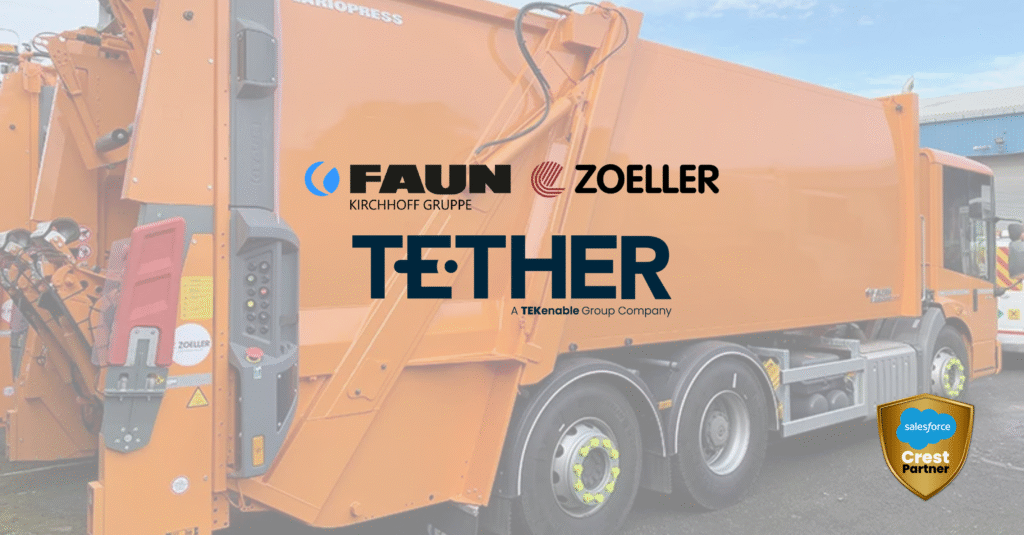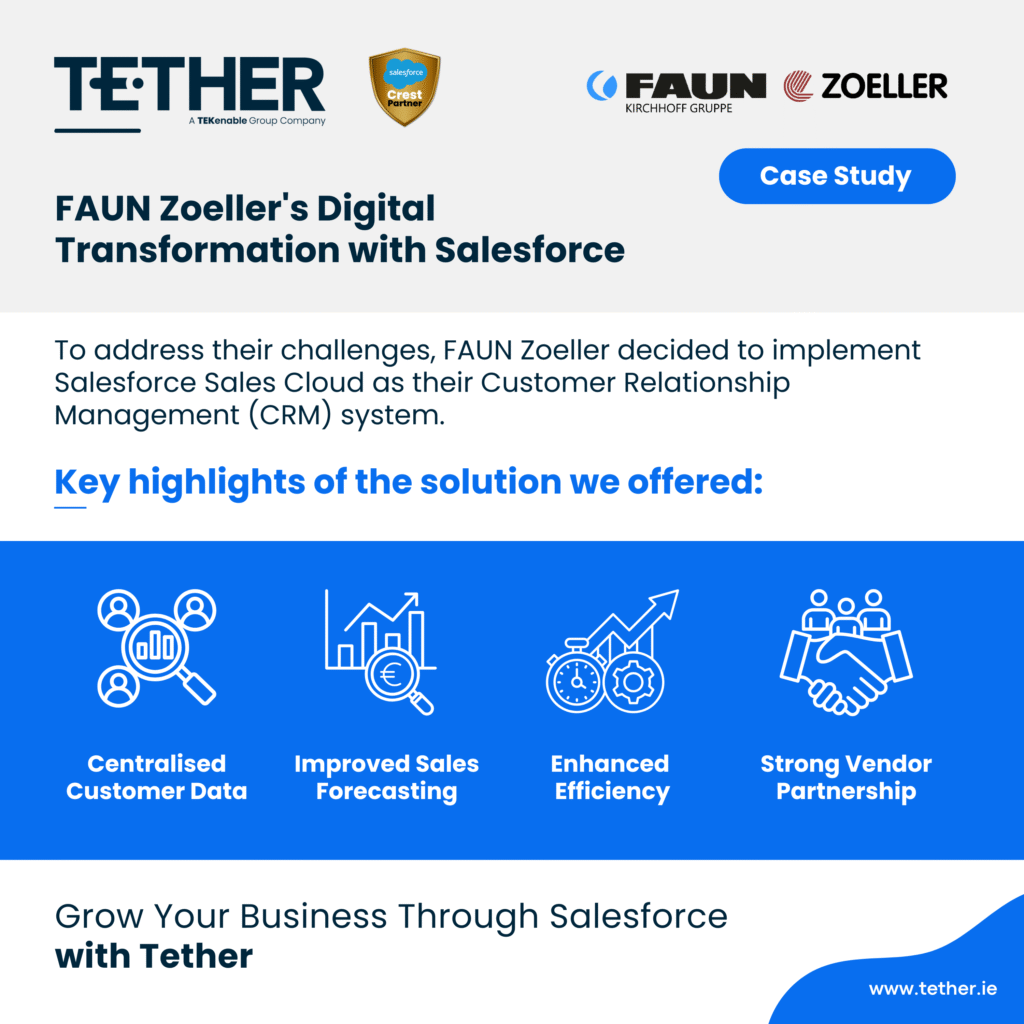
The Challenge
FAUN Zoeller, a subsidiary of the Kirchhoff Ecotec group, faced significant challenges in managing customer relationships and sales processes. The company, which specialises in selling refuse collection vehicles and providing related services, operates in a highly competitive market. Their commercial team relied heavily on emails and spreadsheets to manage customer interactions, leading to inefficiencies and data silos. This fragmented approach made it difficult to maintain a comprehensive view of customer data, especially when employees left the company, taking valuable knowledge with them. Additionally, the lack of a centralised system hindered their ability to forecast sales and manage projects effectively.
The Solution
To address these challenges, FAUN Zoeller decided to implement Salesforce Sales Cloud as their Customer Relationship Management (CRM) system. After evaluating several options, they chose Salesforce for its features and the recommendation from their Salesforce account manager. Tether was brought in to configure and implement the system. The initial deployment focused on providing the commercial team with a centralised platform to manage customer interactions and data. This move was aimed at ensuring that customer information was not lost when employees left and that the company could build a more comprehensive view of their customers.
In addition to Salesforce Sales Cloud, FAUN Zoeller implemented Mission Control, a project management software built on the Salesforce platform, to streamline their project management processes. Tether played a crucial role in configuring and implementing this system as well.
The Outcome
- Centralised Customer Data: Reduced reliance on emails and spreadsheets, ensuring data continuity even when employees left.
- Improved Sales Forecasting: Utilised Salesforce’s reporting and dashboard functions for accurate sales forecasts and strategic planning.
- Enhanced Efficiency: Streamlined project management processes with Mission Control.
- Strong Vendor Partnership: Successful implementation and ongoing support through a positive working relationship with Tether.

Salesforce Sales Cloud in Digital Transformation FAQs:
1. What is Salesforce Sales Cloud and how does it support digital transformation?
Salesforce Sales Cloud is a cloud-based CRM platform that helps businesses modernise their sales operations. It supports digital transformation by centralising customer data, automating sales workflows, and integrating AI-powered insights to drive smarter, faster decisions.
2. How does Sales Cloud improve sales team performance?
Sales Cloud enhances productivity by streamlining lead management, automating repetitive tasks, and providing real-time visibility into the sales pipeline. Features like opportunity scoring, forecasting, and mobile access empower teams to close deals more efficiently.
3. Can Sales Cloud be tailored to fit our digital strategy?
Yes. Sales Cloud is highly customisable. It can be configured to align with your digital transformation goals – whether that’s improving customer engagement, enabling remote work, or integrating with other platforms like marketing automation or ERP systems.
4. What role does AI play in Sales Cloud’s digital capabilities?
Salesforce Einstein, the AI engine with Sales Cloud, delivers predictive analytics, lead scoring, and intelligent recommendations. These tools help sales teams prioritise efforts, personalise outreach, and forecast outcomes with greater accuracy.
5. Is Sales Cloud suitable for businesses at different stages of digital maturity?
Yes. Whether you’re just starting your digital journey or scaling advanced capabilities, Sales Cloud offers flexible deployment options. Quick-start packages help smaller teams get up and running, while enterprise-grade features support complex, multi-region operations.
6. What are the measurable benefits of using Sales Cloud in a digital transformation initiative?
Organisations using Sales Cloud often report improved sales forecasting accuracy, faster quote-to-cash cycles, increased customer satisfaction, and reduced operational costs. These outcomes are driven by better data visibility, automation, and cross-team collaboration.



